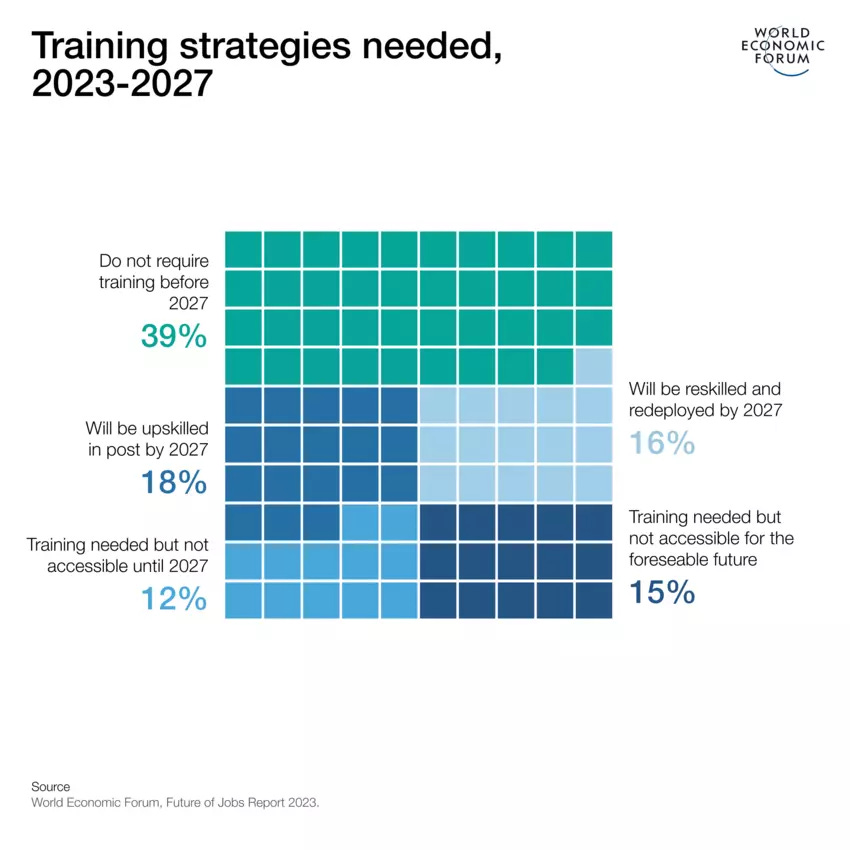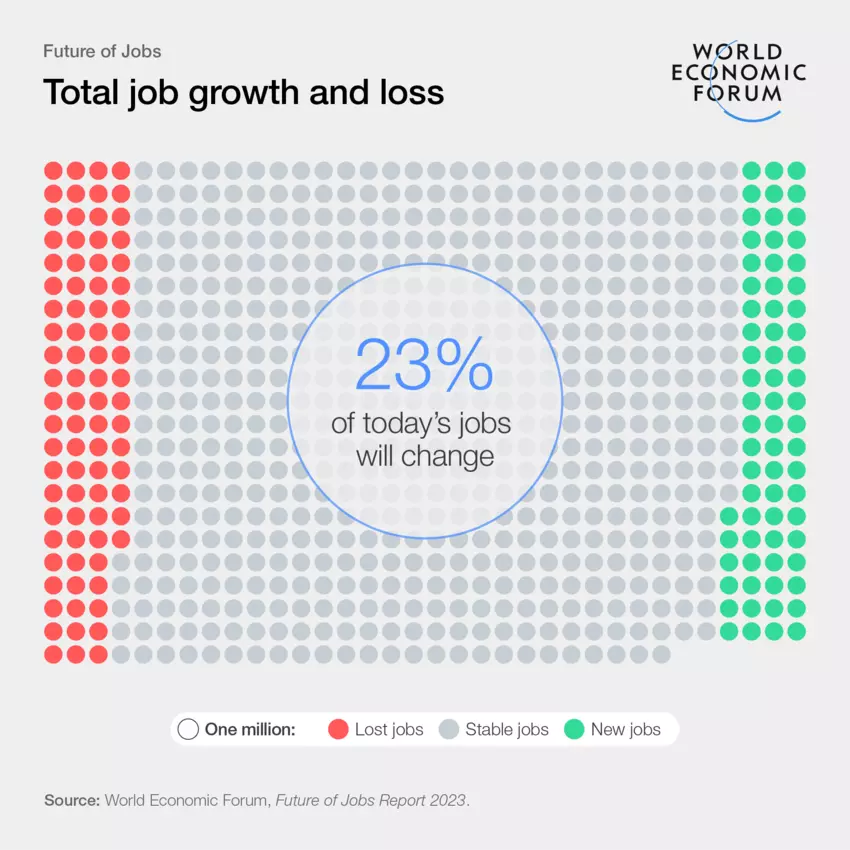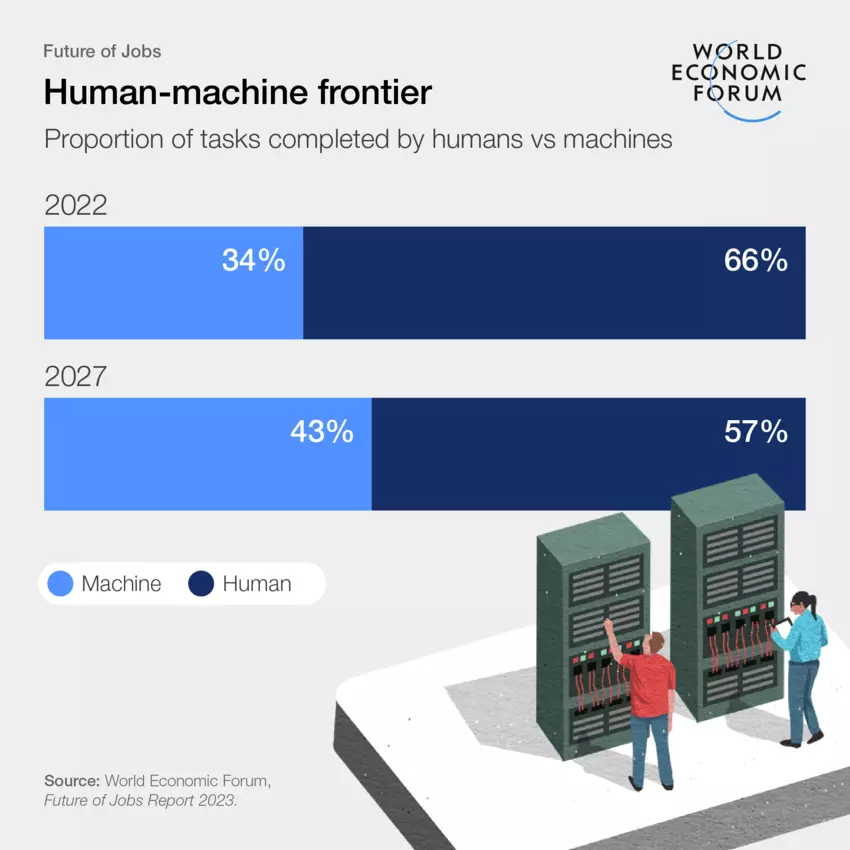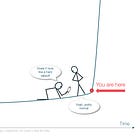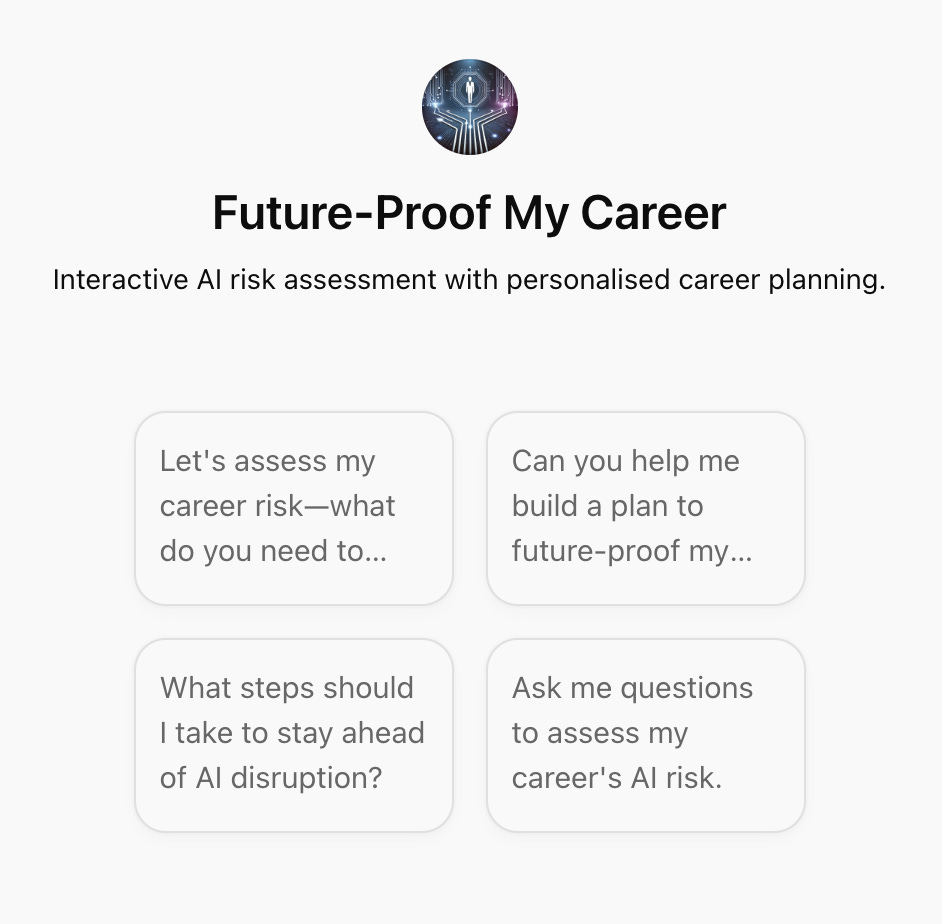Test Your Job Risk Score
Your turn to think like the LSE: Because your career counsellor doesn't know how to and your elected officials don't care
👋🏼, I’m Adam.
I write about the intersection of technology and… everything, but almost always through the lens of culture and society. I cover whatever technology is currently chewing up and spitting out, where it’s all headed, what’s breaking (most of it), and what comes next (lots!).
Consider subscribing for the full edition—or don’t, but then you’ll probably just get the AI-generated summary.
In the last post, we laid it all out—AI is devouring jobs and shaking up the entire landscape, and guess what? The politicians aren’t looking out for you, and neither are career counsellors or HR reps (who, by the way, are likely to be displaced themselves sooner rather than later). This is the number one question I get when I give talks around the world: "Will AI take my job?" And right behind that comes, "If I'm in Uni now [or just leaving], what should I do?"
So, maybe we should address that head on.
After this one, there’s a big post ahead: the five safest industries and their jobs. But first, today we're going to get you thinking like the pros—think LSE-style. We’ve put together a hands-on quiz so you can assess how at risk your role is and, more importantly, what actions you need to take right now to stay ahead. No one else is going to do it for you.
Today We're Talking About:
Thinking Like the LSE:
Discover how experts break down jobs into automatable tasks, forecast future work patterns, and use hard data to predict change.
Learn the methods of task-based analysis, scenario planning, and sector-specific deep dives.
2025 vs. 2030: The Transformation Timeline:
Understand how the initial wave (2025) of AI disruption—85M jobs displaced and 97M new roles emerging—differs from the deeper, more pervasive changes projected for 2030 (up to 30% of work hours automated, 375M workers potentially needing to pivot).
See how the balance between job augmentation and replacement shifts over time.
Test Your Job Risk Score:
A hands-on quiz (and fully interactive Custom GPT) for full paid subscribers to assess how vulnerable your current role is to AI disruption.
Rate your tasks, human reliance, industry exposure, need for continuous upskilling, and sensitivity to external shocks to find out where you stand.
Key Takeaways for Action:
Learn why continuous upskilling and leveraging your uniquely human skills are essential to not just survive—but thrive—in the AI revolution.
Get ready to pivot if necessary, because if you’re not proactive, you’re already behind.
5 Ways to Think Like the LSE
So, how do the experts crack this code? No one has the full answer, but there are several analytical frameworks that act as your compass—guiding you through the shifting landscape of AI and work. By breaking jobs down into tasks, forecasting future scenarios, crunching hard numbers, drilling into sector specifics, and integrating real-world case studies, you can begin to see the future as a set of trends you can adapt to—not an inscrutable mystery. Here’s the skinny:
Task-Based Analysis: Break down jobs into their constituent tasks. Experts like Leslie Willcocks at LSE show that only about 9% of jobs are fully automatable—most roles are a blend of human ingenuity and machine efficiency.
Scenario Planning & Forecasting: Use models from McKinsey and the OECD to predict future work patterns by considering factors like tech adoption, regulation, and economic cycles. One study even suggests that 75 to 375 million workers may need to switch roles by 2030.
Quantitative Projections & Surveys: Leverage hard data from the WEF’s Future of Jobs Reports and employer surveys, which indicate that about 77% of employers plan to reskill their workforce by 2030.
Sector-Specific Deep Dives: Drill down into industries such as healthcare, skilled trades, and creative sectors to pinpoint where AI is already at work and where the human touch still wins. For example, in healthcare, AI tools boost productivity without replacing the nuanced work of doctors and nurses.
Hybrid Qualitative Case Studies & Expert Interviews: Combine quantitative data with real-world case studies and insights from industry experts. This integrative approach reveals the context and human factors behind the numbers, providing a richer, more actionable perspective on how these trends are unfolding.
Biggest Differences Between 2025 and 2030
The transformation isn’t a one-off shock—it’s an evolving revolution. In 2025, we're witnessing the initial tremors: some tasks automated, a few roles shifting. But by 2030, the whole playing field is set to change. Automation will run deeper, job roles will morph, and the pressure to reskill will be relentless. Let’s break down the key differences:
Depth of Automation:
2025: We’re just seeing the initial wave—85 million jobs displaced, 97 million new roles emerging. Tasks are getting automated, but whole roles aren’t yet vanishing.
2030: Automation runs deeper. Forecasts suggest up to 30% of work hours could be handled by AI. The shift isn’t just about tasks—it’s about entire job roles morphing, with estimates that up to 375 million workers may need to switch careers if we don’t get our act together.
Job Transformation vs. Replacement:
2025: AI is mostly augmenting roles. The focus is on replacing repetitive tasks while leaving the strategic and creative elements intact.
2030: The line between augmentation and replacement blurs. Even high-skill roles will have their lower-level functions automated, demanding continuous upskilling. Only about 14% of jobs are at high risk of complete automation, but almost every role will be reshaped.
Sector-Specific Shifts:
2025: Early signs of disruption in sectors like clerical work, customer service, and basic production.
2030: Deep integration across all sectors. In healthcare, for instance, AI diagnostic tools will have evolved from a useful add-on to an essential component, while creative industries and education will demand even more human ingenuity as machines take on the grunt work.
Upskilling Urgency:
2025: The need for reskilling is clear, but many are still in the early stages of adapting.
2030: With 77% of employers planning to reskill their workforce, continuous learning isn’t optional—it’s survival. The onus is on you to keep pace or risk obsolescence.
In short, while 2025 marks the tipping point, by 2030 the transformation will be in full swing. The future isn’t just about surviving a one-off shock; it’s about thriving in an ever-evolving landscape where adaptation is the only constant.
Test Your Job Risk Score: Your Turn to Think Like the LSE
OPTION 1: Use the framework below to assess the vulnerability of your current role to AI-driven disruption. For each criterion, rate your job on a scale from 1 (low risk) to 5 (high risk). Add up your scores and refer to the key at the end to gauge your overall risk level. This isn’t destiny—it’s a diagnostic tool to help you strategise your next move.
OPTION 2: Use an interactive CustomGPT setup for your specific career and circumstance.


